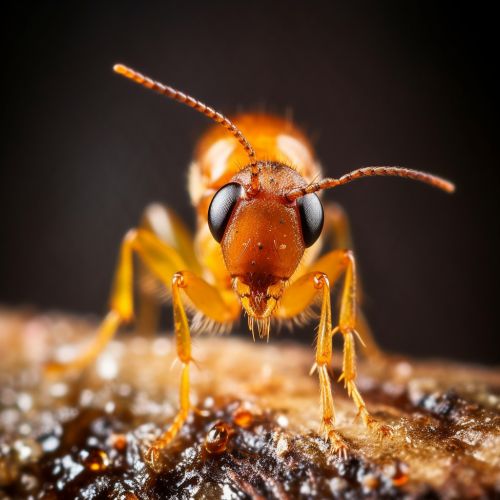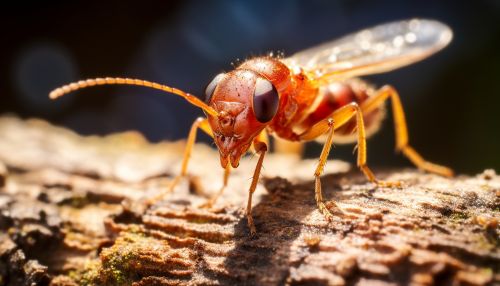Termite
Introduction
Termites are a group of eusocial insects that, until recently, were classified at the taxonomic rank of order Isoptera (see Taxonomy), but are now accepted as the infraorder Isoptera, of the cockroach order Blattodea. While termites are commonly known, especially in Australia, as "white ants," they are not closely related to the ants.
Biology and Behavior
Termites are eusocial insects that are classified in the infraorder Isoptera, or as epifamily Termitoidae within the cockroach order Blattodea. Termites were once classified in a separate order from cockroaches, but recent phylogenetic studies indicate that they evolved from close ancestors of cockroaches during the Jurassic or Triassic. However, the first termites possibly emerged during the Permian or even the Carboniferous. About 3,106 species are currently described, with a few hundred more left to be described. Although these insects are often called "white ants", they are not ants. Like ants and some bees and wasps from the separate order Hymenoptera, termites divide labor among castes consisting of sterile male and female "workers" and "soldiers". All colonies have fertile males called "kings" and one or more fertile females called "queens". Termites mostly feed on dead plant material and cellulose, generally in the form of wood, leaf litter, soil, or animal dung. Termites are major detritivores, particularly in the subtropical and tropical regions, and their recycling of wood and plant matter is of considerable ecological importance.


Taxonomy and Evolution
As eusocial insects, termites live in colonies that, at maturity, number from several hundred to several million individuals. Colonies use decentralised, self-organised systems of activity guided by swarm intelligence, which exploit food sources and environments unavailable to any single insect acting alone. A typical colony contains nymphs (semi-mature young), workers, soldiers, and reproductive individuals of both genders, sometimes containing several egg-laying queens.
Pest Control
In certain regions of the world, notably the southeastern United States, termites are considered a major pest. Homeowners are advised to have their homes inspected for termite activity annually. The methods of dealing with termites have changed significantly over the years, with the focus shifting from reactive to proactive approaches. This includes the use of termite-resistant building materials and, more recently, the use of termiticides (chemicals that kill termites) and baiting systems.
